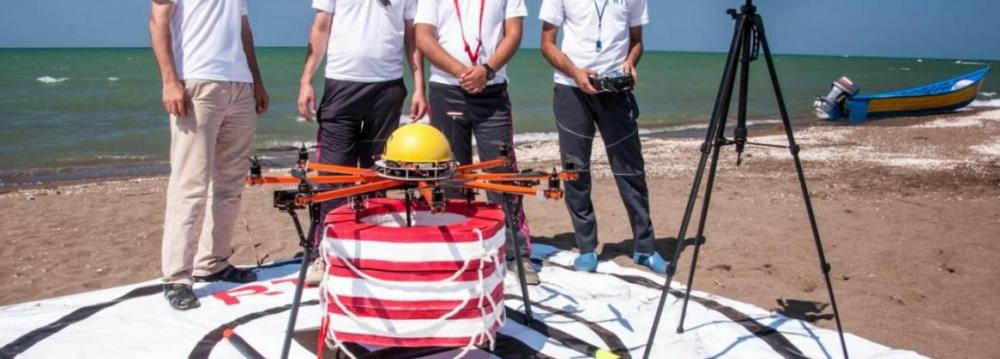A former student of Shahroud University, now based in Britain, is helping save lives as far away as Chile with his new "lifesaving drone."
And the world's emergency services are lapping-up his new innovation.
Initially designed to fly above the sea and drop life-preserver rings to whoever is in the water, Amin Rigi’s robotic lifeguard can—in its latest version—convert itself into a hovercraft and bring a potential victim back to the shore.
“We think we can decrease the number of drownings and we can save lives,” says Rigi, a 28-year-old robotics engineer who hopes to bring his rescue robot to the global market, according to Irish Media.
Rigi envisions a future in which his unmanned aerial vehicles are used to help people who fall overboard from ships as well as those who are involved in car crashes, floods and fires, injured on hikes or stranded on oil rigs.
“We are thinking of drones that can actually be part of rescue missions,” he says, pointing out that most commercial drones are capable only of surveillance.
His most recent model, dubbed "Roboguard", can land in and take off from water, carry up to 15 kg of equipment, and move at speeds of up to 50 km/h. It will be capable of longer-range missions thanks to 15 minutes of battery power. The upgradable model can be fitted with thermal cameras to aid nighttime rescues and it uses GPS and artificial intelligence to operate as autonomously as possible.
Eventually, Rigi hopes the line will include a solar-powered landing platform where the drone can recharge its batteries.
Two summers ago, trials in the Caspian Sea, where hundreds of people drown each year, included a race between the drone and a human lifeguard to reach a swimmer waiting 75 meters out to sea.
That first prototype, named Pars, reached the swimmer three times faster than the lifeguard, releasing a life ring for him within 22 seconds of launch. That beat the lifeguard, who took about 90 seconds.
The tests prompted more than 100 expressions of interest from 32 countries. With scant resources, Rigi could not respond immediately. But now the rescue drone is on the verge of test production, with a run of about 200 expected this summer.
Distributors from Mexico, Brazil and Italy have already bought the drone, which sells for about $8,400. Customers from eight other countries, including the US, Latvia and Australia, are in negotiations. They are also being tested on beaches in Chile.
Rigi has moved to London with his company, RTS Ideas, to be part of Sirius, an accelerator program that brings young entrepreneurs to the UK to help them launch their businesses. Now he gets help with living expenses, office space, mentoring and access to investors.
Rigi, who is the oldest of three children, credits his parents with nurturing his teenage interest in technology, especially robotics, and financing his early research.


